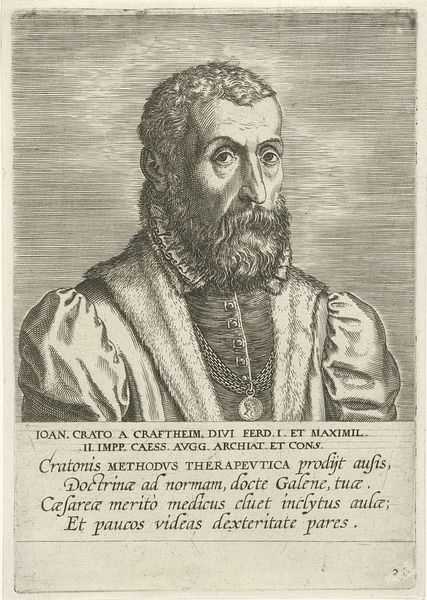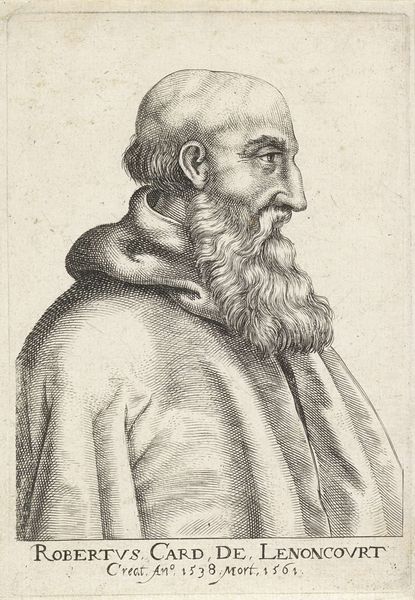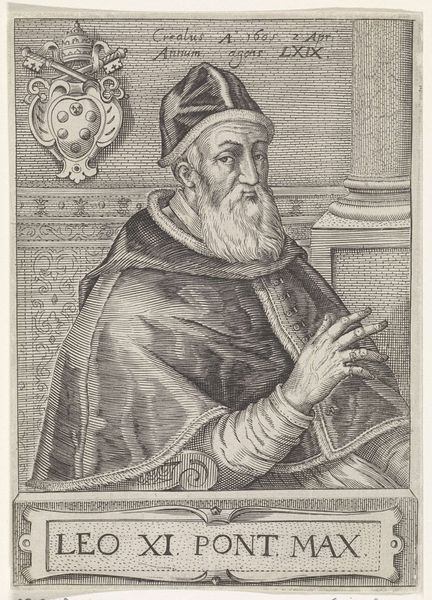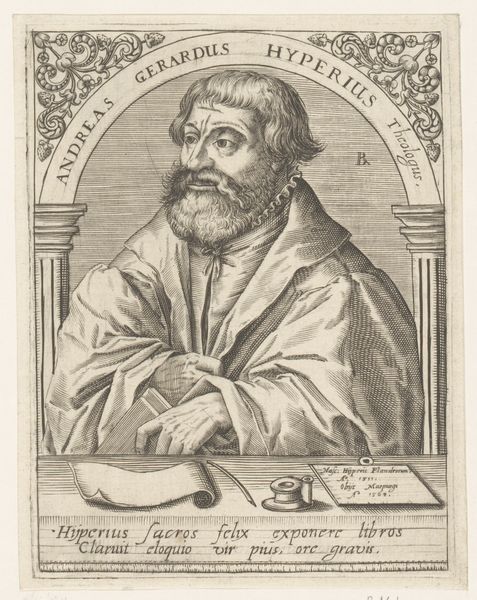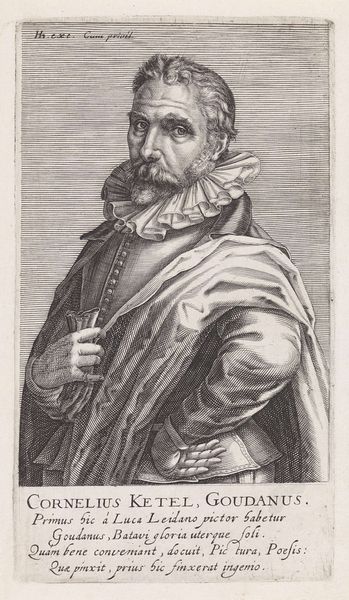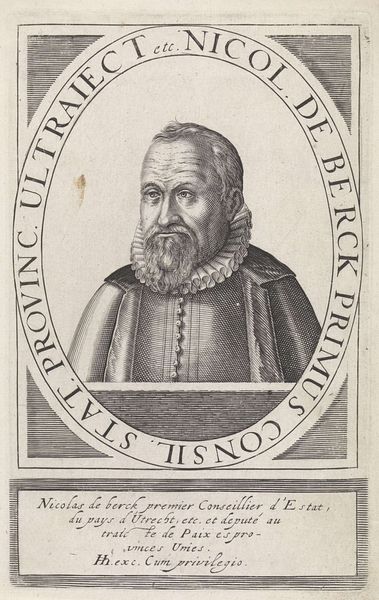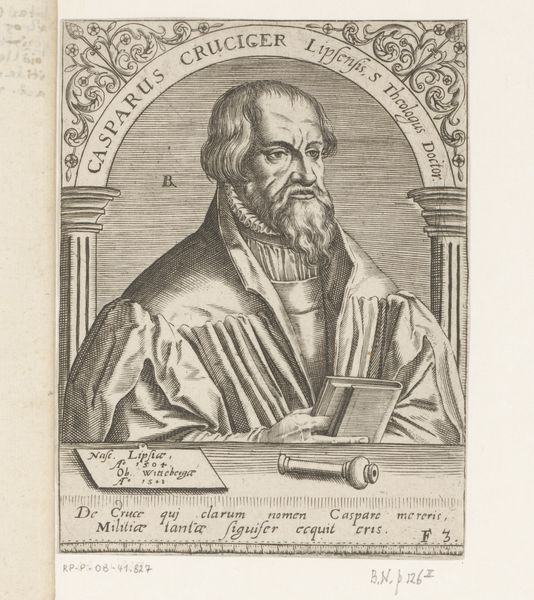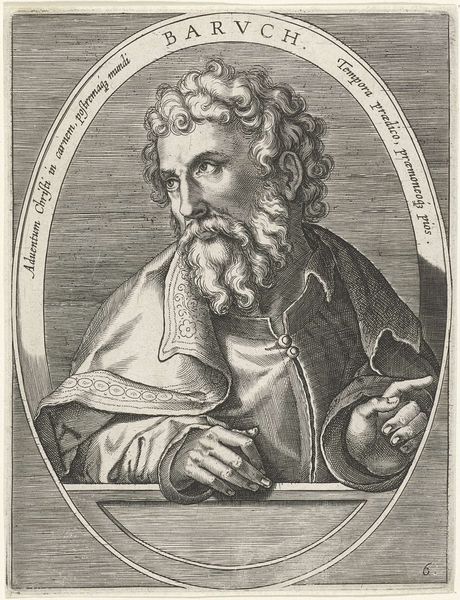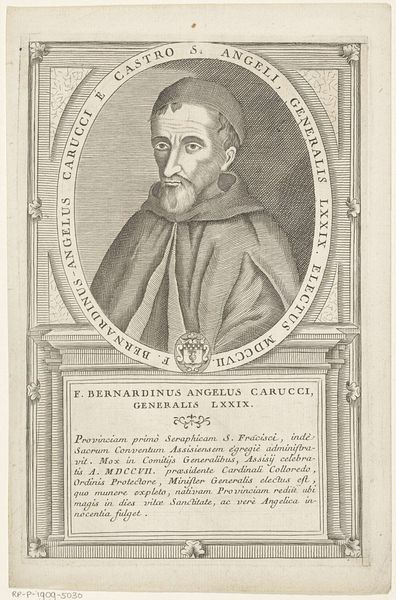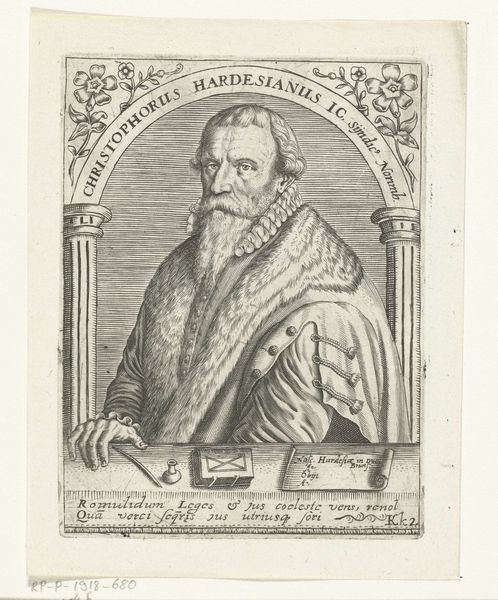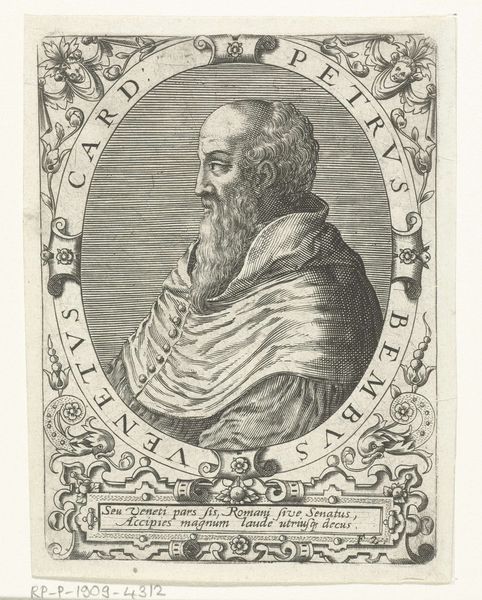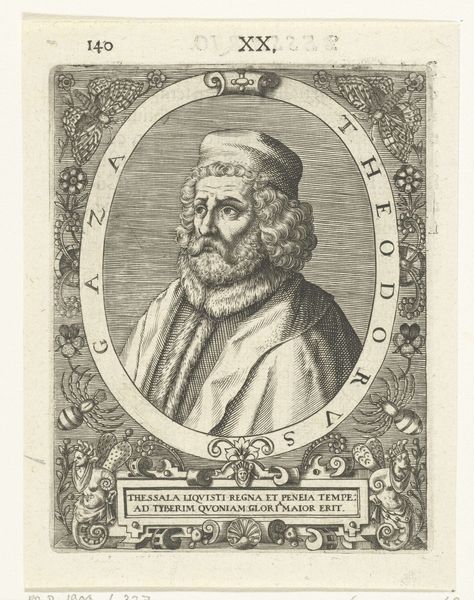
print, engraving
#
portrait
#
baroque
# print
#
old engraving style
#
figuration
#
portrait reference
#
line
#
portrait drawing
#
academic-art
#
engraving
Dimensions: height 169 mm, width 119 mm
Copyright: Rijks Museum: Open Domain
Editor: Here we have "Portret van Francesco Corti" by Philips Galle, created sometime between 1587 and 1606. It's an engraving, so a print. It's quite austere, in its presentation; I am interested in the subject’s gaze. How do you interpret this work, and what can it tell us about the world it came from? Curator: That's a keen observation. It is a formal portrait, yes, but the subject's gaze also reveals the intellectual and social positioning of figures like Francesco Corti, a legal scholar. What sociopolitical function did portraiture like this serve in the late 16th century? Editor: It must be about power. It almost seems… a propaganda piece, showcasing his status. Curator: Precisely. Consider the historical context: The rise of the merchant class, the Reformation, and the scientific revolution. These prints allowed for the wide dissemination of images of powerful individuals, bolstering their authority. Who do you think this portrait spoke to? And how might the messages change depending on who views them? Editor: Perhaps other lawyers, to elevate the profession? Or maybe it was meant to inspire younger generations to pursue similar paths of learning and power? Curator: Exactly. Furthermore, notice the Latin inscription. How might the inscription affect the audience and accessibility of the piece? It signals the world of elite knowledge, connecting Corti to the humanist tradition. The piece then excludes those without a classical education, thus performing social separation as a function of display. Editor: That's really fascinating! I hadn't thought about how language itself creates another layer of social power. Curator: Right! Art doesn’t just reflect power, it actively shapes and perpetuates it. Editor: I see it now. Thanks for connecting this image to the bigger picture of cultural movements and identity.
Comments
No comments
Be the first to comment and join the conversation on the ultimate creative platform.
